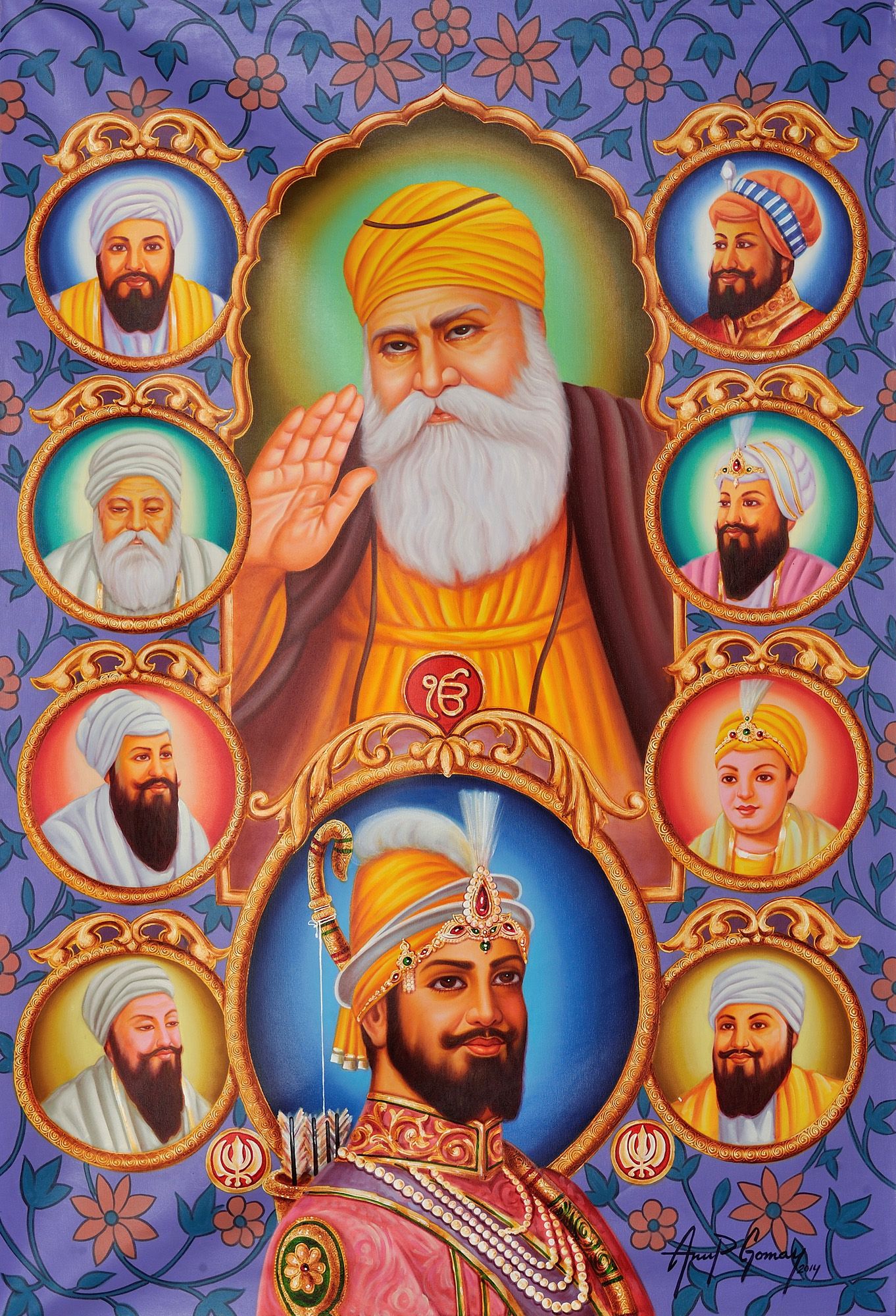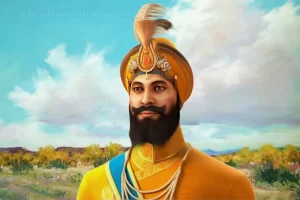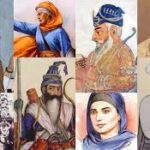Over 500 years ago, Founded in the Punjabi culture of India, one might think the Sikh religion probably have more than ten sikh Gurus family tree, who are holy teachers and leaders. Sikhism developed in a zone where connection between Hindus and Muslims occurred frequently with periods of conflict and cooperation. Sikhism, while distributing some traits with each, is a full on separate religion that follows a single Almighty but faith that all religions follow this almighty in their own manner. Let’s see at how each Guru supported form Sikhism.
Who were the sikhism gurus?
Let’s cover the Sikh Gurus.
Guru Nanak Ji (1469-1539)
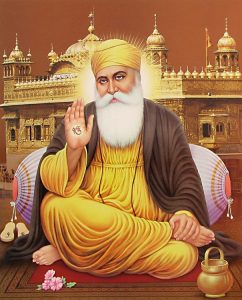
Guru Nanak, the creator of Sikhism, come out from a Hindu family in a village inhabited by both Muslims and Hindus. At 13, the Guru turn down the sacred thread at his coming of age ritual. Years later, after disappearing for three days, the Guru came back to his family with a disclosure from God. Guru Nanak – taught Sikhs about oneness of humanity and oneness of God. Guru Nanak Dev, foremost of the 10 gurus, started the Sikh faith, initiated the concept of one God. He began the institution of Guru Ka Langar as it is the word in the Sikh religion denotes to the usual kitchen where meal is served to everyone without any prejudice. He highlight the equality of women and declined the path of renunciation and he disapproved the authority of the Vedas. He was the peer of Mughal emperor – Babur.
Guru Nanak taught that there is only one Almighty and all religions follow this Almighty in some way. To obey Almighty, one require to follow a path of hard work and honesty. The Guru often spoke against meaningless rituals and pen up many hymns and poems to teach his followers. He traveled most of his lifetime to apportion Sikhism throughout the Middle East and Asia.
The foremost of the Gurus and said to be creator of the religion, Guru Nanak was given birth on 15 April 1469 and his death date is 22 September 1539. He gave the new idea of Almighty and rejected the Hindu and vedas scriptures. He set up equality for women and also began the Langar practise.
Guru Angad Ji (1539-1552)
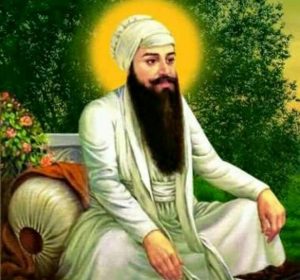
Initially named Lehna, Guru Angad became deeply dedicated to Guru Nanak and his teachings. Guru Nanak say Lehna to him and grant him the name Angad from the word ang signify hand. He then praised him and named him his inheritor. Guru Angad’s most remarkable achievements included developing the langar, a free kitchen where anyone could eat and gather, and energetically recommended for children’s education. Guru angad was born on 31 March 1504 and had taken up the authority on 7 September 1539. He died away in 29 March 1552. He simplified the Gurumukhi script and also established numerous new schools. He also expand the religion further. Guru Angad – taught Sikhs about being substantially healthy. Guru Angad Dev, second of the 10 gurus, introduced and invented the Gurmukhi (written structure of Punjabi) script. He assembled the inscription of Nanak Dev in Guru Granth Sahib in Gurmukhi Script. Expanded and popularized the organization of Guru ka Langar which was initiated by Guru Nanak Dev.
Guru Amar Das Ji (1552-1574)
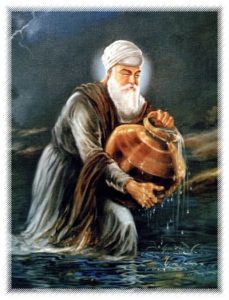
Guru Amar Das, heir of Guru Angad, lived a plain life dedicated to Sikh service and principles to others. He enlarged the role of the langar and set in motion it in several locations, wanted anyone desiring to meet with him to first dine in the langar. He further taught that all humans were equal in the eyes of Almighty, including women. He ordered a community of Sikhs which set off Ramdaspur, later renamed Amritsar. Finally, he assembled the writings of all earlier Gurus, set up the foremost manuscripts of the Sikh holy book, the Sri Guru Granth Sahib. Guru Amar Das(The third Guru of Sikhism) brought into existence on 5 May 1479, achieved authority on 26 March 1552 and died away at the age of 95 on 1 September 1574. He set up the Piri and Manji pattern of religious goal for women and men respectively. He put forward about a lot of feminist reforms like preaching against Purdah and Sati systems, favoured widow remarriage, etc. He also told Akbar to veto the toll levied from non-Muslim travellers while crossing Yamuna and Ganga. Guru Amar Das – taught about the significance of action to aid sexual equality.
Guru Amardas initiated the Anand Karaj marriage ceremony for the Sikhs, put back the Hindu form. He set up Piri and Manji system of religious missions for women and men respectively. He gave strength to the tradition of Guru Ka Langar. He also entirely do away with amongst the Sikhs, the custom of purdah and Sati system. He was the modern day of Mughal emperor – Akbar.
Guru Ram Das Ji (1574-1581)
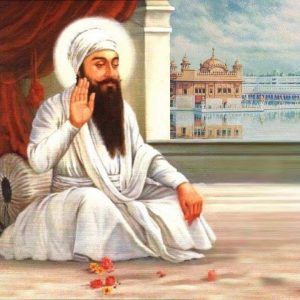
Near the end of his lifecycle, Guru Amar Das proposed his son-in-law Jetha to function of a guru, call him Ram Das as his teachings carry on with the doctrine of equality. He also sermonized against superstition and the empty faithfulness to dress codes, ritual, and dietary restrictions. He told Sikhs that engaging in the sorrows and joys of others was equally as significant as meditation to spiritual progress. the fourth Guru of the Sikhs, Guru Ram Das, was brought into existence on 24 September 1534, became a Guru on 1 September 1574 and died away on 1 September 1581. He penned up the four Lawans (stanzas) of the Anand Karaj, a definite marriage code for Sikhs unrelated from the traditional and orthodox Hindu Vedi system. He also set down the foundation of the city of Amritsar. Guru Ram Das – taught Sikhs the significance of honouring together and build up a city that later became Amritsar.
Guru Ram Das, fourth of the 10 gurus, established the city of Amritsar. He begin the building of the popular Golden Temple at Amritsar, the holy city of the Sikhs. He ask for the Muslim Sufi, Mian Mir to place the cornerstone of the Harmandir Sahib.
Guru Arjan Ji (1581-1606)
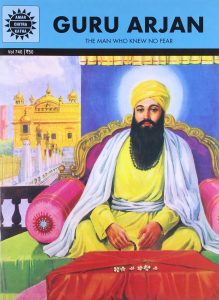
Guru Ram Das chosen his youngest son, Arjan, to triumph him after grasping of his eldest son’s, Prithi Chand’s, deceitful and jealousy withhold of letters from his younger brother. Upon taking authority, Guru Arjan depart for Ramdaspur to carry on the work there while ignoring his brother. Sadly, with the ear of the Mughal Emperor, Prithi Chand, had his brother tortured and imprisoned to death. Guru Arjan, who obeyed the Guru Grant Sahib, the holy writ of the Sikhs was the 5th Guru. He was brought into existence on 15 April 1563 and passed away on 30 May 1606. He achieved Guruship on 1 September 1581. He was executed and tortured on the orders of Mughal emperor Jahangir and is the foremost martyr of Sikh religion, and denoted as Shaheedan-de-Sartaj. Guru Arjan – taught Sikhs about thoughtful feeling for the less lucky through setting up a shelter for untouchable.
He assembled the Adi Granth, the holy writ of the Sikhs. He completed building of Sri Darbar Sahib also familiar as Golden Temple in Amritsar. He set up the city of Tarn Taran Sahib near Goindwal Sahib. He became the foremost fair martyr in history of Sikh when Emperor Jahangir ordered his execution. Thus, he was hailed as Shaheedan-de-Sartaj (The crown of martyrs).
Guru Hargobind Ji (1606-1644)
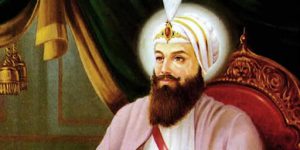
Guru Hargobind welcomed the authority of the Sikh faith only a month before his 11th birthday. The loss of Guru Arjan, his father, and the cruelty of the emperor led Guru Hargobind to turn down the Seli, a wool string worn out by every Guru since Nanak. Instead, he demanded for a sword. Thus, he started the militarization of the Sikh. Born on 19 June 1595, the sixth Sikh Guru achieved sage on 25 May 1606 and passed away on 28 February 1644. He started the practise of developing the Sikh army-saints warriors. Guru Hargobind – taught Sikhs by holding of two swords, one of which denoted spiritual power and the other signify material power.
Guru har gobind was the son of Guru Arjan Dev and was familiar as a “soldier saint”. He organised a tiny army and became the foremost Guru to take up arms to safeguard the faith. He carry on wars against Mughal rulers Shah Jahan and Jahangir.
Guru Har Rai Ji

Guru Har Rai was brought into existence in 1630 and was a very calm leader. He dedicated himself to spread out the teachings of Guru Nanak and take on missionary work. This denotes that he travelled around widening the messages of the other Sikh faith and the Sikh gurus. He also think deeply a lot and support people to do the same.
Although he was a very calm silent man, he didn’t put an end to the army that his grandfather – Guru Hargobind – had developed. Instead, physically, he distanced himself and never utilized it himself to solve quarrel with the Empire.
He set up three centres for the spread of Sikhism, which are familiar as ‘Bakhshishes’ and made Sikhism extremely popular and strong. He protected the integrity of the Guru Granth Sahib by declining to modify it’s words. Guru Ji left for his lovely abode on 6 October 1661 after put forward Harkrishan as his successor. Guru Har Rai – taught Sikhs the significance of caring for the natural planet.
Though guru har rai was a man of peace, he never seperated the armed sikh warriors who were earlier supported by Guru Har Gobind. He gave shade to Dara Shikoh, the elder son of Mughal Ruler Shah Jahan, who was later victimized by Aurangazeb. He carefully ignored conflict with Emperor Aurangzeb and dedicated his efforts to missionary work.
Guru Harkrishan Ji (Guru From 1661 to 1664)
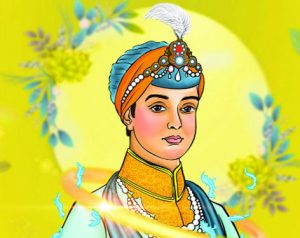
Guru Har Krishan was brought into existence in 1656 and fix up as a guru only five years later! He was the childlike of all the Sikh gurus. He was a humanitarian, which denoted that his main goal was to support people. Throughout his tiny life, he mainly supported heal individuals in Delhi who were hurting from a smallpox epidemic. He assisted many people, no matter what their religion was and where they came from. Sadly, he gave him life assisting people, as he soon shrinking smallpox himself and passed away before he turned eight.
Basically, the Guru gave his life while healing and serving the individuals struck by a smallpox epidemic in Delhi. The young Guru took part in to the sufferers irrespective of their creed and cast. Particularly, the native Muslim population was so much influenced with the virtuous humanitarian action of the Guru Sahib that they nicknamed him child prophet as ‘Bala Pir’. Before he became submerged with Immortal on 30 March 1664 at Delhi, he emit out his last words “Baba Bakala, which hinted the next Guru of the Sikhs is at Baba Bakala (historical city in Amritsar, Punjab). The youngest and a Guru for the smallest duration of just 7 years, Guru Har Krishan took up Guruship on 6 October 1661 and passed away on 30 March 1664. Guru Har Krishan – taught Sikhs about caring for the suffering through caring for smallpox victims and cholera.
Guru Har Krishan was the seeming young of the Gurus. He was fix up as Guru at the age of five. He was peer of Aurangazeb and order to be present to Delhi by him under framed charges of anti-Islamic blasphemy.
Guru Tegh Bahadur Ji
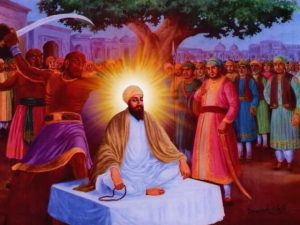
Guru Tegh Bahadur was brought into existence on 1 April 1621 at Amritsar. He was the granduncle of Guru Harkrishan and son of Guru Hargobind. He set up the city of Anandpur. Guru Sahib laid down his lifecycle to sustain the right to freedom of religion.
Guru was in charge for rescue the lives of Kashmiri Hindu Pandits, who were being oppressed by the Mughals. To do so he had to establish his own life to protect their religion. Guru Tegh Bahadur was killed by Emperor Aurangzeb on 11 November 1675, as he declined to become a Muslim. Guru Tegh Bahadur – taught Sikhs to protect the right of all people to freedom.
The second last human Guru, Guru Tegh Bahadur passed away on 11 November 1675. He achieved Guruship on 20 March 1665. He was against the transformation of Hindu Kashmiri Pandits to Muslims and hence he was executed and tortured by Aurengzeb. As he was born in 1621. He faith strongly that individuals must be permitted and have the freedom to worship whatever religion they needed. For this reason, he protected the Hindu religion to try and safeguard Hindus from being pushed to convert to Islam. He also declined to convert to Islam and was martyred and executed as a result.
He set up the town of Anandpur. He was in opposition of the forced conversion of the Hindu Kashmiri Pandits by Mughal ruler Aurangazeb and he was as a consequence abuse for this.
Guru Gobind Singh Ji
He was born on 22 December 1666 at Patna. Guru Gobind singh became the Guru in 1675 after the death of his father Guru Tegh Bahadur. Guru Gobind Singh in 1699, named the Sikhs and developed the Khalsa (the ‘Pure’). Thus, transform the Sikhs into Saint Soldiers. He himself got named by his followers and hence he is praised through this couplet:
“Waho Waho Gobind Singh Aape Gur Chela”
(Praise to Gobind Singh, Himself the Disciple and the Guru)
He counsel the Sikh female to utilize the last name of Kaur (princess) and the Sikh males to utilize the last name of Singh (lion). He also ordered the Sikhs to keep the five K’s, i.e Kirpan, Kanga, Kara, kesh, and Kachera. Guru Sahib was the writer of many banis (hymns) like Chaupai and Jaap Sahib. He even pen up his autobiography denoted as the Bichitra Natak.
He assembled the Dasam Granth Sahib and commanded the Sikhs to go after Guru Granth Sahib as the Guru after him. He fought many conflicts against the armed force of Aurangzeb and his allies. Guru Sahib lost all his four sons, his father,and his mother to the Mughal tyranny. Guru Gobind Singh – taught Sikhs that there is particular one human race.
Guru Sahib was extremely bad way thrust a knife by one of the two Pathan killers sent by Wazir Khan. Guru Ji die from the effect of his wound and was submerge with Immortal on 7 October 1708. The final Sikhism Guru set off on 11 November 1675 at the soft age of 9 and died away on 7 October 1708. As he was the last Guru in human format, he moved on the function of a guru of Sikhs to Guru Granth Sahib, the holy writ of Sikhs. He was also strike by a Mughal emperor Wazir Khan and passed away because of wounds.
He became Guru after the suffering of his father Guru Tegh Bahadur. He developed the Khalsa in 1699, change out the Sikhs into a saint-soldier order for safeguard themselves. Last Sikh Guru in human structure and he proceeded the Guruship of the Sikhs to the Guru Granth Sahib.
Guru Granth Sahib (Guru From 1708 to the perpetuity)
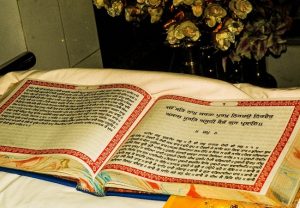
The rearmost guru is Guru Granth Sahib or the Adi Granth is the holy writ of the Sikhs that carries a total of 5867 hymns in 1430 pages. The Granth was pen up in Gurmukhi script and it carry out the actual words and verses as emit out by the Sikh Gurus. It was assembled by Guru Arjan Dev and later additions were also build by Guru Gobind Singh.
It is contemplated as the Supreme Spiritual Authority by the Sikhs. Moreover it is the only holy writ of its kind that not only carry the works of its own religious founders but also the writings of individuals of other faiths. Guru Granth Sahib is a book of disclosure.
It is universal in its approach and scope. It bring out the Words of the Master through His message carrier on earth. Sikhs highly admire it and it is hold on to in all Sikh houses and in many Sikh Gurdwaras. Moreover, no Sikh ritual is remarked as complete unless it is carry out in the presence of Guru Granth Sahib.
Understanding about the Sikh Gurus names and their philosophies is the initial step towards a better know how of Sikhism religion. However, the life chain of the Sikh Gurus and their teachings are extremely and extensive way vast and hence, they cannot be assembled in a single blog yet an insight into their lives is enough to light of the spiritual wake up among the readers any day.
The holy text of Sikhs, Guru Granth Sahib is the future and the present Guru for all time.
However, they also grasp from the Rahit Maryada and the examples of the Gurus. Guru Granth Sahib (also familiar as the Adi Granth) is the holy writ of the Sikhs. The Granth was pen up in Gurmukhi script and it carries the actual verses and words as emitted by the Sikh Gurus. It is regarded as the Head of the Sikh religion and Supreme Spiritual Authority, rather than any living person.
Sikhs do grasp many matters from the lives of the human Gurus. This involves their importance on equality. The Gurus’ examples are significant to Sikhs in their daily life.
Sikh Gurus
- The timeline of the ten gurus of Sikhism stretch from the birthing of Nanak Dev in 1469, through the life of Guru Gobind Singh.
- At the time of Guru Gobind Singh’s death in 1708, he pass on the designation of Guru to the Sikh holy writ, Guru Granth.
